A Guide for OSHA Fixed Ladder Safety Requirements
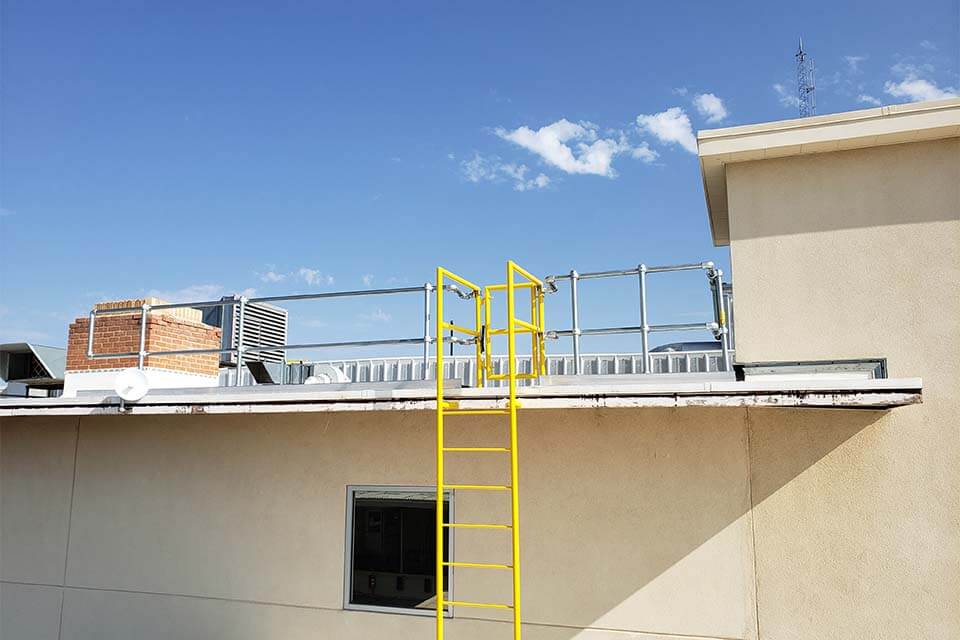
They say that you're most likely to get into a car accident when you’re 2 miles from home. This is because you feel the most at ease when you’re almost there or just getting started.
Your fixed ladders are very much like those 2 miles from home. When you first start the job, you’re focused on the work you’re about to do and not how you’re getting there. When you finish the job, your focus shifts to either moving on to your next job or ending your shift.
Either way, you’re distracted and that puts you at risk.
This is why it’s so important to understand how you can protect users when they are accessing or leaving work zones with fall hazards.
In this article, I'll review the different hazards you’re exposed to while using a fixed ladder and what you can do to provide a safer solution.
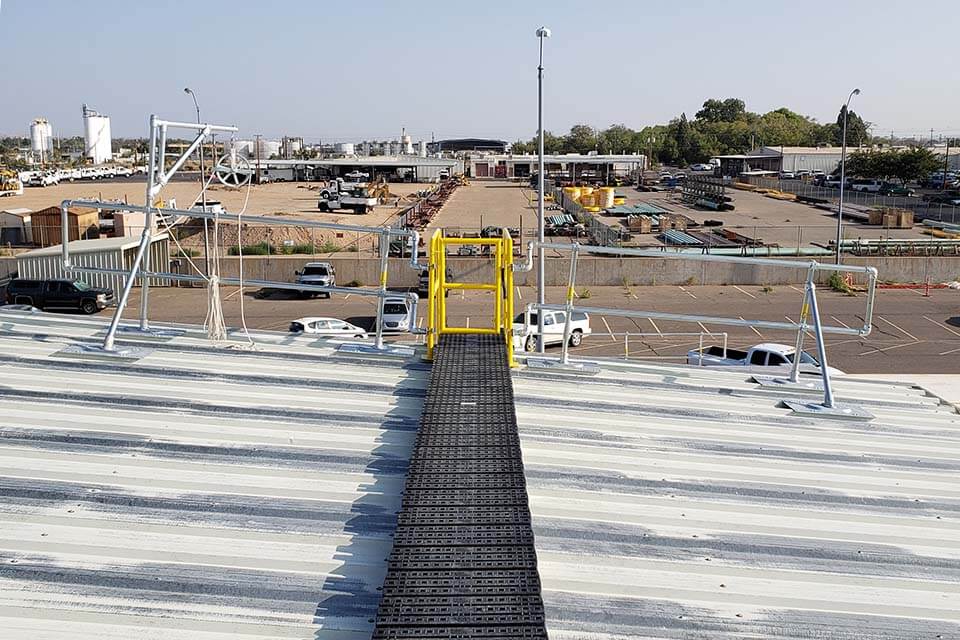
What does OSHA require for fall protection on fixed ladders?
Because OSHA sets the standards for workplace safety, I wanted to start with a brief overview of what codes apply to fixed ladder safety. As I review the hazards specific to fixed ladders, you'll see how some of these will apply to other means of access, like stairs and lifts.
Here are the specific codes you need to be aware of:
- OSHA 1910.23 - This section goes over the design for ladders. We will not be referencing this code below but wanted you to have easy access to it.
- OSHA 1910.28 - This section will tell you when fall protection is required and what fall protection you can use.
- OSHA 1910.29 - This section will tell you how the fall protection system you use should be designed.
- OSHA 1910.140 - This section will describe how to use and design a personal fall protection system if you choose to use one.
Here’s the big picture need-to-know for ladder safety. I’ll go into more detail in the sections below.
- Ladders 24 feet in height or more require fall protection while climbing the ladder.
- Users need fall protection on the upper level that the ladder accesses.
- Self-closing safety gates or offsets are required at ladderway access points.
- If the ladder leads to a roof hatch, a guardrail is required around the roof hatch.
- Cages are no longer considered as fall protection for ladders.
Before we expand on the above points, it’s important to consider whether access is required at all. The very first thing you should do with any hazard is to find a way to eliminate the hazard. If the HVAC unit can be moved to the ground, then there is no need to access a ladder and no risk to have to mitigate.
Substitution would be the next step in the hierarchy of controls. Instead of a ladder, use a compliant stair system to gain access to the upper level.
If that’s not an option, then here is how you protect your workers while they use fixed ladders.
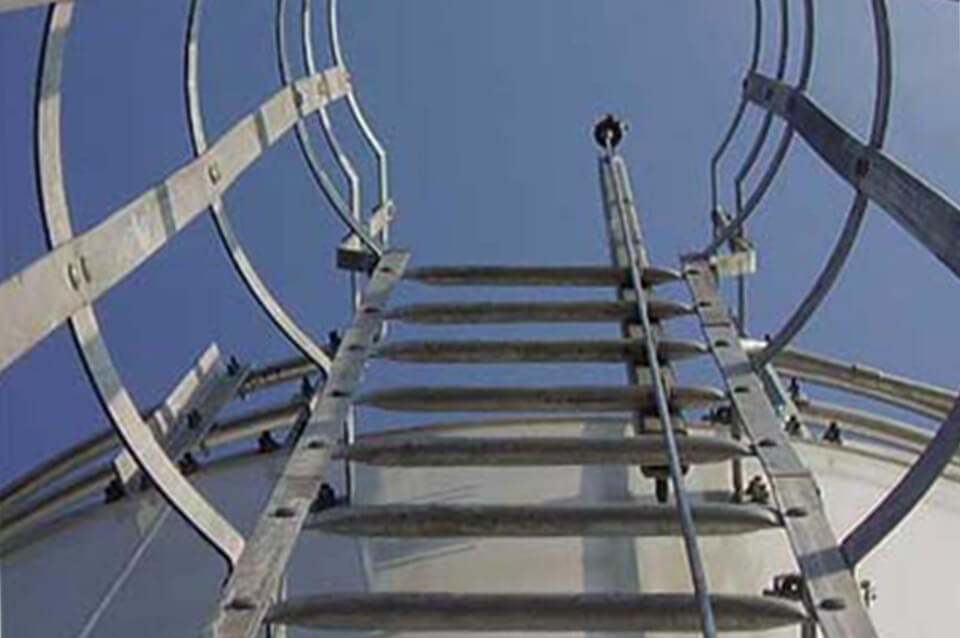
Fixed Ladder Safety Systems
The very first hazard to be aware of is falling off the ladder while the user is climbing. This can happen because they are tired, the rungs were slippery from rain, or a strong wind caught them by surprise. Either way, users require safety while ascending or descending a ladder.
OSHA states that any fixed ladder that extends 24 feet or more above a lower level requires a ladder safety system or a personal fall arrest system.
A ladder safety system is a system designed to either eliminate or reduce the possibility of a fall from a ladder. Whether it’s a cable or a rigid track, it needs to be connected securely on both ends of the ladder with appropriate intermediate supports. The user needs to be able to climb the ladder without holding, pushing, or pulling any part of the system. The connector between the system and the harness needs to be 9 inches or less. This means that any harness that you use will need a D-ring on the front of the harness.
A personal fall arrest system will catch a user in the event of a fall, reducing the impact on the user to acceptable levels. This could mean that a rope with a rope grab is used, requiring the user to stop every rung or two in order to slide the rope grab up or down while using the ladder.
Either of these systems that you use is designed to help manage the risk of falling while climbing a ladder. Do not neglect safety just because OSHA only requires one of these options if the ladder is 24 feet or more in height. What I mean by this is that other ladders, regardless if they are less than 24 feet, may need fall safety so that your employees can get home safely at the end of the day.
How do platforms impact ladder safety?
A common point of confusion is if platforms on ladders interrupt the 24-foot requirement. OSHA states in 1910.28(b)(9)(ii) that each section of a ladder requires a safety system. Rest platforms do not interrupt the rule. So, if you have two 20-foot ladders separated by a rest platform, then both sections of the ladder require fall protection and not just the upper ladder.
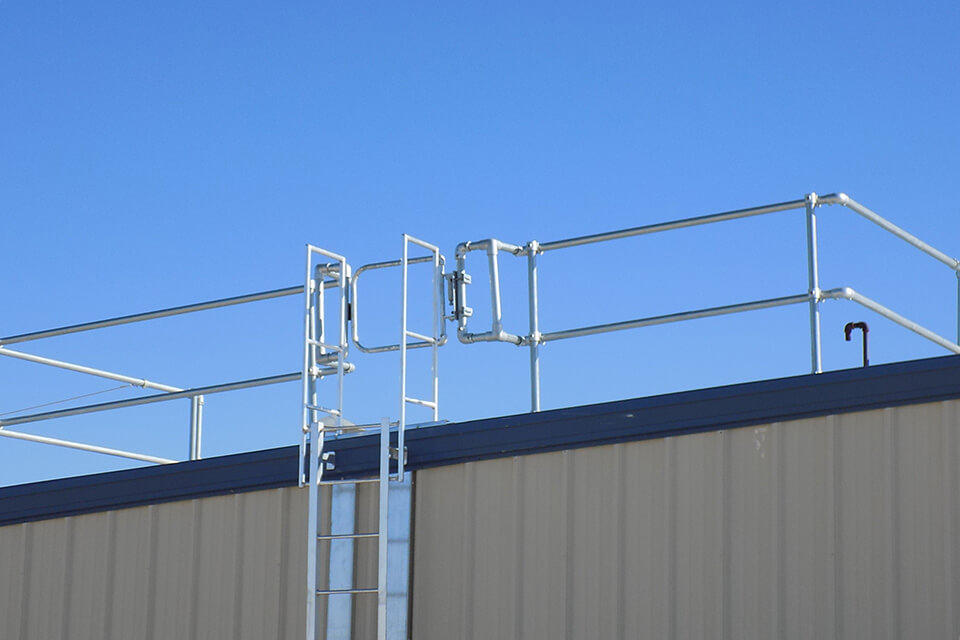
Fixed Ladder Rooftop Guardrail
Picture the moment when you step off of a ladder. Look to your left and right in your mind. Can you see the edge?
This is a hazard that is consistently missed, neglected, or left at the bottom of the priority list. Let’s look at it from a risk perspective.
If you use the 5x5 risk matrix, then you are considering how often someone is exposed to this hazard and how severe the consequences are for this hazard. The frequency for ladder access is pretty simple. EVERY time someone accesses this upper level, they are exposed to this hazard. It doesn’t matter if you are repairing an HVAC, cleaning a gutter, or just inspecting the roof. You are exposed to the edge every time. Twice. When you access the upper level and when you leave it.
As for severity, falls continue to be a leading cause of death and injury in the workplace. This shows me that the severity is pretty high. So, what do you do about it?
OSHA says that you can use a guardrail, a personal fall protection system, or safety netting anytime that you are at risk of falling 4 feet or more. However, two of these options are not ideal forms of safety, and here’s why.
A safety net would have to leave an opening for you to travel down the ladder. If you stumble while walking up to the ladder and fall, then you can hit the ground through the hole in the netting. This obviously defeats the purpose of having fall protection.
A personal fall arrest system requires a user to disconnect from one system and connect to the other. In between, the user is at risk of falling over the edge. I know there are Y lanyards that are used to allow for 100% tie-off. However, ladder safety systems require that the connection is no more than 9 inches. It would be a very tricky and convoluted process to maintain 100% tie-off. Let’s be honest, most workers will just ignore this requirement to gain efficiency and reduce frustration.
That’s why a guardrail is a much easier and safer option. Guardrail is both a passive and a collective form of fall protection. This means that the user doesn’t need to do anything to be protected by it nor is there a limit to the number of people protected by it.
How much guardrail should I install next to a ladder?
OSHA says that users need to be protected from any fall hazard, with one exception. If the work that is being done is temporary (less than 2 hours) AND infrequent (less than once a month), then fall protection is not needed when the user is 15 feet or more from the hazard. So, install at least 15 feet of guardrail on both sides of the ladder to make sure that you have a safe and compliant work environment.
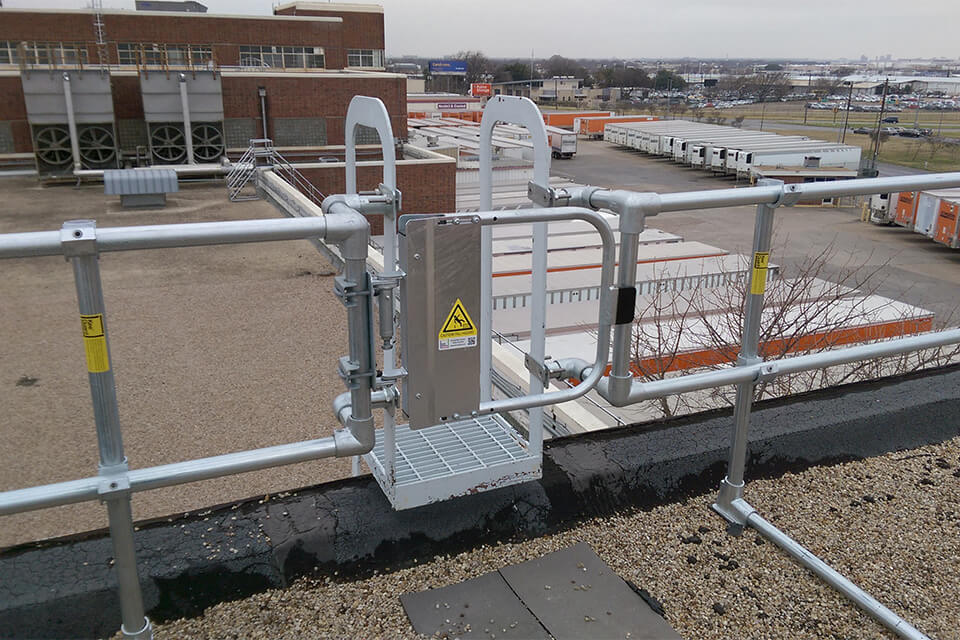
Self-Closing Safety Gates for Fixed Ladders
You have protected workers while using a ladder and the edges to each side of the ladder when they are on the upper level. However, that still leaves an open risk...access to the ladder itself.
Remember, it’s when you’re close to home that your guard is down and accidents are more likely to happen.
By its very nature, a ladder requires a gap so that you can gain access. How do you protect against something that is required to be there?
OSHA says that any ladderways should have a self-closing safety gate or an offset at the entrance to the ladderway. This is in reference to holes, but you can easily see why this would be important for any fixed ladder.
Option 1: A self-closing safety gate is just a gate that automatically closes, typically using springs, when the user is no longer interacting with it. It takes the human component out of keeping the gate closed. This is what I suggest using for multiple reasons. It’s cheaper than an offset. It’s more comprehensive because there are no gaps when it is engaged. It takes up less space.
Option 2: An offset is a guardrail designed in a way that the user cannot walk directly to the ladder. Imagine having to walk through a corral in order to get to the ladder. If a user is not paying attention, they will walk into the guardrail before they step through the ladder entrance.
You can use either of these options to help provide a safe working environment.
Remember to use safety gates on any rest platforms to protect the user while they rest during a climb or descent.
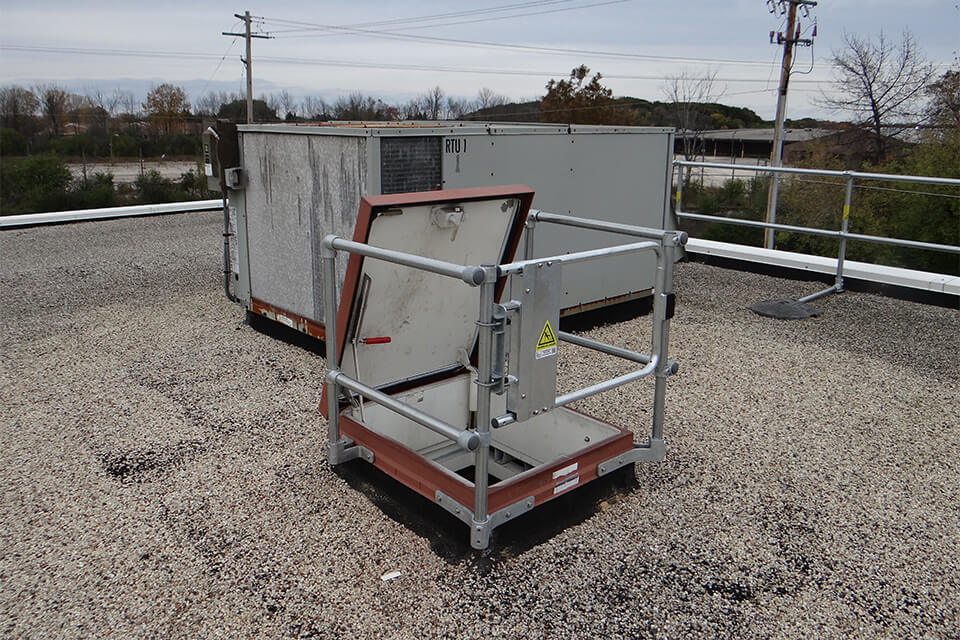
Roof Hatch Ladder Guardrails
A roof hatch is a hole in the roof with a ladder that gives workers access to the roof. Roof hatches are a common way to access roofs and they come in a lot of different sizes. Even though they are common, they are often overlooked in rooftop safety plans.
It’s important to know that OSHA only allows guardrails as a fall protection solution for roof hatches. You need to have fall protection on all four sides. One side of the guardrail can be removable by using a self-closing safety gate. Or, as mentioned above, you can use an offset railing.
There are options that allow you to mount a guardrail to the curb of your hatch. Or you can use non-penetrating options. If you need a non-penetrating solution, then contact one of our fall protection specialists.
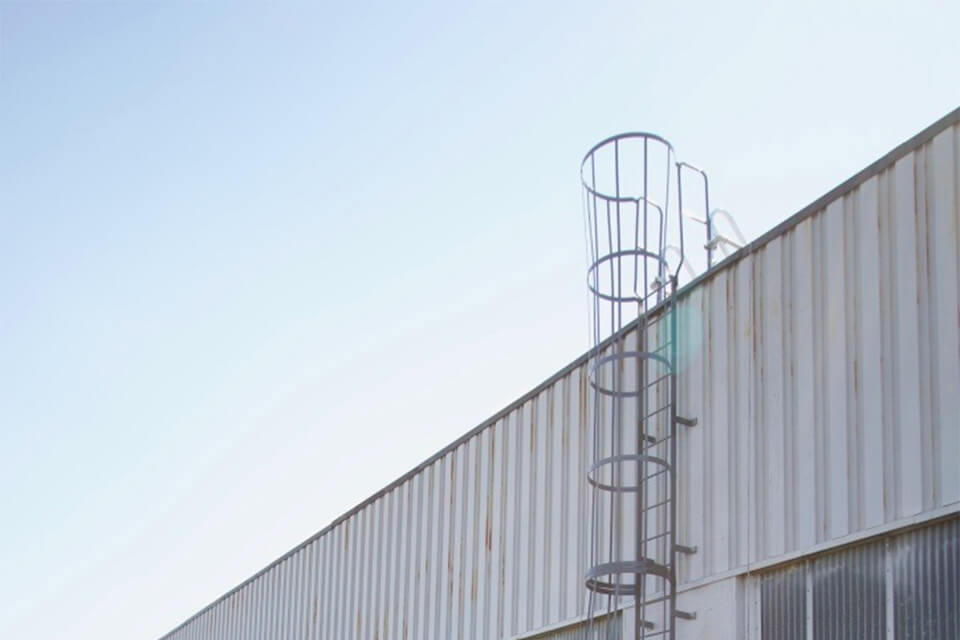
Cages for Fixed Ladders
In 2017, OSHA updated the fall protection regulations.
As of November 2018, ladder cages and wells are no longer considered to be fall protection for new, updated, or repaired ladders. If you have a ladder that was installed before that, then you have until November 2036 before it will not be considered to be fall protection.
However, that does not mean you cannot use cages on your ladders. If you do, here’s what you need to know.
- Cages cannot interfere with the safe use of a ladder safety system or personal fall arrest system.
- Cages should be designed so that a user can easily gain access to and from a ladder.
- Cages should continue for the whole length of the ladder, except where access is required.
- Cages should contain a user in the event of a fall, directing them to a lower landing.
What to do next?
Ladders may seem simple. Find the right height and install it on the right wall. I hope you can see now that there’s more to protecting workers than using the right ladder.
Taking the time to ensure that each of your ladders has the proper fall protection is a small price to pay in order to provide a safe work environment. This will help anyone who uses a ladder to get home safely at the end of the day.
If you need help determining how to best protect workers on ladders, then please contact our specialists today. Ask the specialist about other areas that are often overlooked fall hazards.



